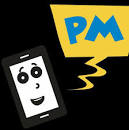Ear infections are one of the most common childhood ailments, with statistics showing that five out of six children will experience at least one ear infection by the age of three. As alarming as that sounds, these infections are treatable and preventable with the right knowledge and timely intervention.
David Roberson, MD, MBA, FACS, FRCS, a specialist in pediatric ENT (Ear, Nose, and Throat) at Bayhealth ENT, Milford, brings over 20 years of experience in diagnosing and treating ear conditions in children. Dr. Roberson spent significant time at Boston Children’s Hospital and Harvard Medical School before joining Bayhealth. With his extensive background, he has helped countless children recover from and manage common ear conditions.
Let’s dive into the most frequent childhood ear conditions, their symptoms, and how to seek the appropriate treatment for your child’s well-being.

What Causes Ear Infections in Children?
The Anatomy of the Ear and Why Children Are Prone to Ear Infections
In a healthy ear, there is air behind the eardrum that helps the ear function normally. When this balance is disturbed, it often leads to an ear infection, typically affecting the middle ear behind the eardrum.
In young children, especially infants and toddlers, the eustachian tubes—the tubes that drain fluid from the middle ear—are not fully developed. This makes them more susceptible to fluid buildup in the ear, which can lead to infections. The accumulation of fluid creates an environment that fosters bacteria, resulting in painful ear infections.
Fluid in the Ear: Common Scenarios
According to Dr. Roberson, there are three typical scenarios involving fluid in children’s ears:
-
No issues – The fluid doesn’t affect the ear, and the child experiences no symptoms.
-
Hearing problems – The fluid may cause temporary hearing loss because the eardrum cannot move freely.
-
Bacterial growth – The fluid becomes infected with bacteria, causing an ear infection, often accompanied by pain, fever, and sleepless nights.
Each of these conditions needs to be carefully monitored to ensure that they don’t lead to long-term issues.
Recognizing the Symptoms of Ear Infections in Children
Common Signs and Symptoms of Ear Infections
When it comes to children, especially babies and toddlers who can’t articulate their discomfort, recognizing the symptoms of an ear infection can be tricky. Here are common signs to watch for:
-
Ear pain: This is the most direct indicator of an ear infection.
-
Fever: A child may develop a low-grade fever due to the infection.
-
Vomiting: This can occur in some cases, especially if the infection causes significant discomfort.
-
Trouble sleeping: Ear pain tends to worsen at night, leading to restlessness and difficulty sleeping.
-
Irritability and crying: Persistent discomfort can make a child unusually fussy.
If your child exhibits any of these symptoms, especially alongside fluid drainage from the ear or difficulty hearing, it’s crucial to see a healthcare professional.
How Ear Infections Affect Children’s Development
The Impact of Untreated Ear Infections on Hearing and Speech Development
One of the major concerns with ear infections in children is their potential impact on hearing and speech development. Fluid in the ear can impair hearing temporarily, and if left untreated, it can have long-lasting effects on a child’s ability to learn to speak and understand language.
Dr. Roberson highlights the importance of early detection, especially in children who are just beginning to speak. The fluid buildup can block sounds from reaching the eardrum, leading to delayed speech development. This can significantly hinder a child’s learning, especially in their formative years.
When Should You Consult an ENT Specialist?
Signs That Your Child Needs to See a Pediatric ENT
If your child is experiencing persistent issues with fluid in the ear or frequent ear infections, it’s essential to consult an ENT specialist for further evaluation. There are several signs that indicate you should seek specialist help:
-
Chronic fluid buildup: If fluid remains in the ear for weeks without improvement, it may require specialized treatment.
-
Speech delays: If your child’s speech development seems delayed, ear infections might be a contributing factor.
-
Recurrent infections: If your child has experienced more than three middle ear infections in six months or four infections in a year, it’s time to seek the help of an ENT professional.
Treatment Options for Persistent Ear Infections
Medical Interventions for Chronic Ear Infections
For children who experience recurrent or chronic ear infections, ear tubes are often recommended. These small tubes are inserted into the eardrum to help drain fluid and prevent future infections. This procedure can significantly reduce the frequency of ear infections and improve hearing.
Dr. Roberson suggests that ear tubes are effective for many children who experience persistent fluid buildup, providing relief and reducing the risk of long-term complications.
Antibiotics and Pain Relief
For bacterial ear infections, antibiotics are often prescribed. However, it’s essential to note that not all ear infections require antibiotics, especially if the infection is viral in nature. Pain relievers like acetaminophen or ibuprofen can help manage discomfort until the infection resolves.
Preventing Ear Infections: Tips for Parents
How to Reduce the Risk of Ear Infections
While it’s not always possible to prevent ear infections entirely, there are steps parents can take to reduce the likelihood:
-
Breastfeeding: Breastfed infants are less likely to develop ear infections due to the antibodies in breast milk.
-
Avoiding smoke exposure: Exposure to secondhand smoke increases the risk of ear infections.
-
Regular handwashing: This can help prevent the spread of bacteria and viruses that cause ear infections.
-
Stay current on vaccinations: Vaccines, such as the pneumococcal vaccine, can help protect children from infections that may lead to ear problems.
FAQ:
1. What is the most common cause of ear infections in children?
The most common cause is fluid buildup in the middle ear, which can become infected by bacteria or viruses.
2. How do I know if my child has an ear infection?
Watch for symptoms such as ear pain, fever, irritability, difficulty sleeping, and trouble hearing or speaking.
3. When should I take my child to an ENT specialist?
If your child has had multiple ear infections in a short period or experiences speech delays, consult an ENT specialist.
4. How can I prevent ear infections in my child?
Breastfeeding, avoiding smoke exposure, regular handwashing, and keeping up with vaccinations can reduce the risk of ear infections.
5. What are ear tubes, and when are they needed?
Ear tubes are small tubes inserted into the eardrum to allow fluid to drain and prevent future infections. They are used in cases of chronic or recurrent ear infections.




